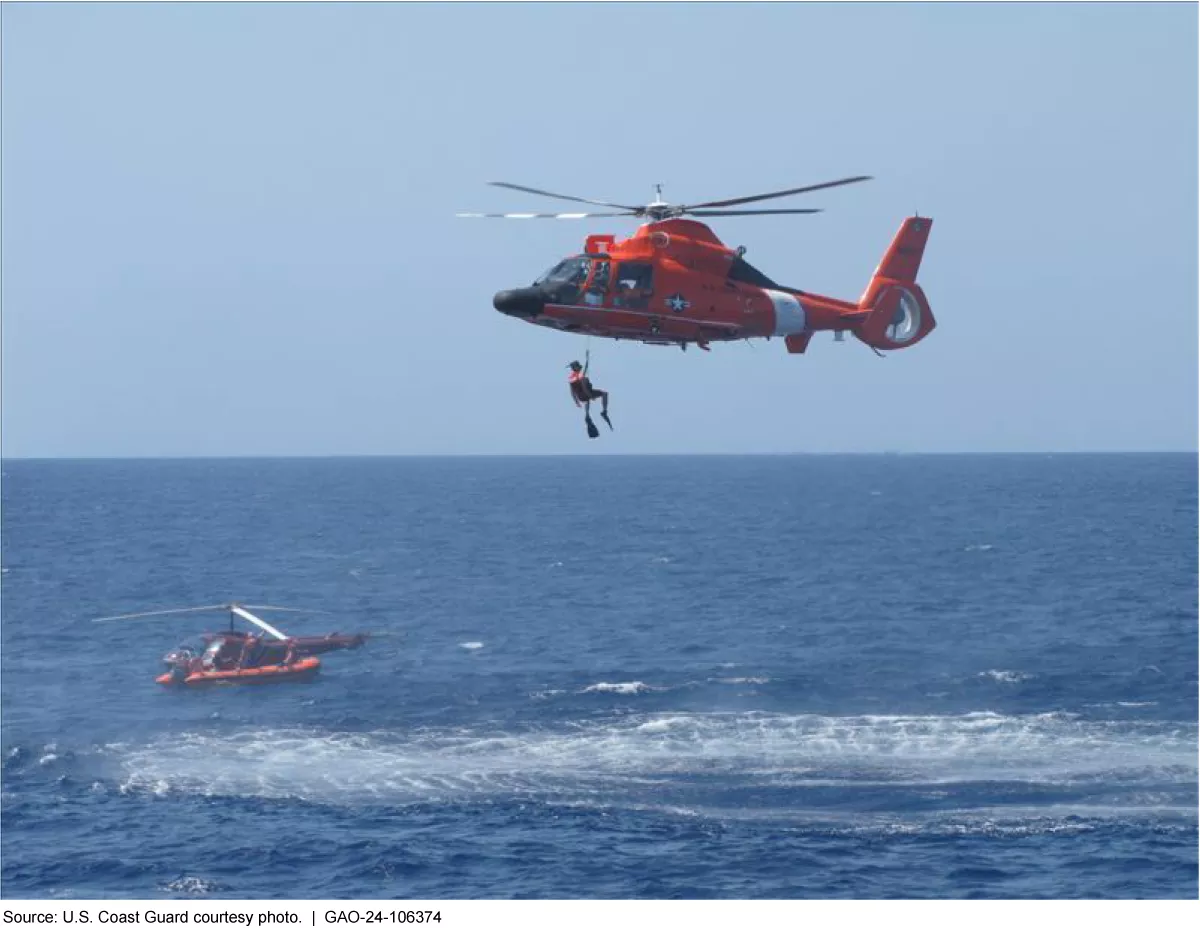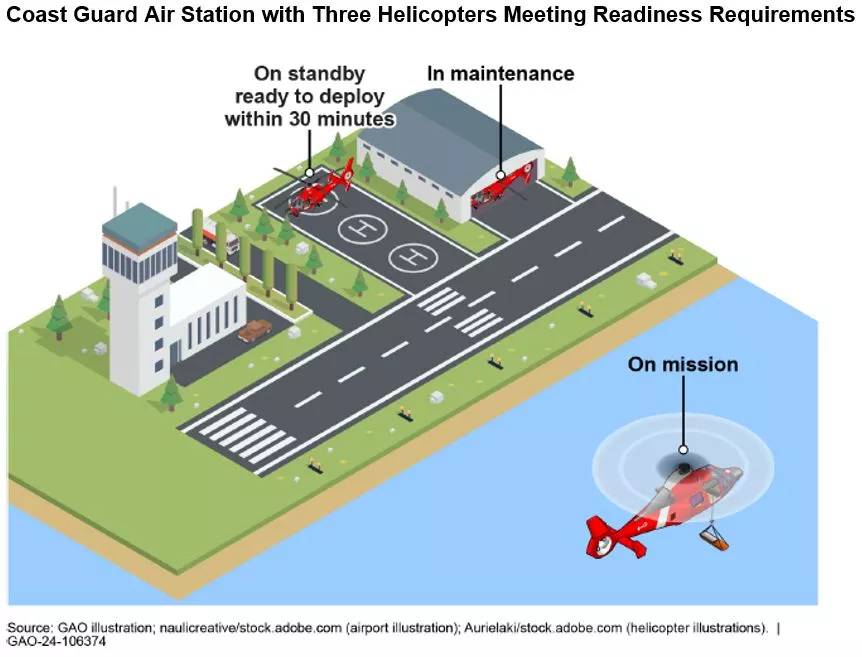The Coast Guard’s Search and Rescue Aircraft are Old and May Not Be Available When Needed
Summer is rapidly approaching—the perfect time to hit the beach! Millions of Americans will do just that as the weather warms up. Many already live on the more than 100,000 miles of coastlines and inland waterways across the United States.
If they find themselves in distress when swimming or boating, the Coast Guard is their first responder. But in a new report, we found that many of the Coast Guard’s helicopters and airplanes used during searches and rescues have generally not met availability targets, which means they might not be there when someone needs them. And many of these aircraft are also approaching their planned retirement dates.
Today’s WatchBlog post looks at our new report on this issue and how the Coast Guard plans to address it.
Image

Search and Rescue Aircraft May Not Be Available
The Coast Guard relies heavily on its fleet of about 200 aircraft for search and rescue missions. This fleet includes 146 helicopters and 47 airplanes. In FY 2022 alone, the Coast Guard used these aircraft for more than 35,000 hours of mission-critical work—including about 12,000 hours of search and rescue work. Many thousands of hours more of flight time were used to find migrants, stop drug trafficking, and more.
According to the Coast Guard, these aircraft are critical for timely responses to emergencies. Their speed allows the Coast Guard to quickly reach targets, hoist people from the water or sinking vessels, or drop supplies and equipment (such as radios, life rafts, and water pumps) into unreachable areas.
At the same time, the Coast Guard has struggled to meet its own target of having its aircraft available for use. The Coast Guard aims to have its aircraft available at least 71% of the time. This goal is meant to ensure that even small air stations (those with only three aircraft) will have at least one available to respond in an emergency. But when we looked at the availability of these aircraft for missions, we found that the Coast Guard missed its target. Overall, the fleets’ availability ranged from 66% to 68% between FY 2018-2022. This may not seem far from the Coast Guard’s 71% goal—but it means aircraft were only available two-thirds of the time (64,000 hours less than the target) in FY 2022.
When we looked at the aircraft availability at the Coast Guard’s 25 air stations, 16 stations had not met availability targets in FY 2022.
Image

The Coast Guard also has a policy that requires its air stations with search and rescue responsibilities to have an aircraft prepared to take off within 30 minutes of receiving a distress call. So, can they do it? When we looked, we found that data aren’t available for all the relevant air stations—and when data are available, they’re often entered inconsistently. This can make it difficult to ensure the 30-minute goal is being met.
Does this mean the Coast Guard is unable to save people? No. But it does mean they may not be best positioned to respond as quickly as they could. As a result, we recommended several actions to better ensure the Coast Guard is ready to respond—including that it evaluate whether its air stations are meeting their responsibilities to have aircraft prepared for takeoff.
What is causing this issue?
Part of the reason why the Coast Guard’s fleet hasn’t met availability goals is because of their age. Older planes and helicopters require more maintenance, which leave them less available for missions. For example, the Coast Guard plans to phase out its short-range helicopters (MH-65D/E) because the manufacturer ended production of these aircraft in 2018. This has made obtaining critical replacement parts, such as gearboxes, difficult.
When we looked at the fleet overall, we found three of the five types of aircraft currently in use are either approaching or have exceeded the end of their service lives. Many of these aircraft entered service in the 1980s and 1990s.
The Coast Guard has several efforts underway to modernize its aging aircraft fleet and plans to spend about $105.6 billion on this effort. But when we looked at these efforts, we found that the Coast Guard hadn’t assessed whether some of the new aircraft it was planning to buy (to replace older ones) would actually best meet its mission needs. As a result, we recommended that the Coast Guard assess whether the type of helicopters it plans to buy actually meet its mission demands.
Learn more about our work and recommendations on the Coast Guard’s search and rescue fleet by reading our full report.
- GAO’s fact-based, nonpartisan information helps Congress and federal agencies improve government. The WatchBlog lets us contextualize GAO’s work a little more for the public. Check out more of our posts at GAO.gov/blog.
GAO Contacts
Related Products

GAO's mission is to provide Congress with fact-based, nonpartisan information that can help improve federal government performance and ensure accountability for the benefit of the American people. GAO launched its WatchBlog in January, 2014, as part of its continuing effort to reach its audiences—Congress and the American people—where they are currently looking for information.
The blog format allows GAO to provide a little more context about its work than it can offer on its other social media platforms. Posts will tie GAO work to current events and the news; show how GAO’s work is affecting agencies or legislation; highlight reports, testimonies, and issue areas where GAO does work; and provide information about GAO itself, among other things.
Please send any feedback on GAO's WatchBlog to blog@gao.gov.




